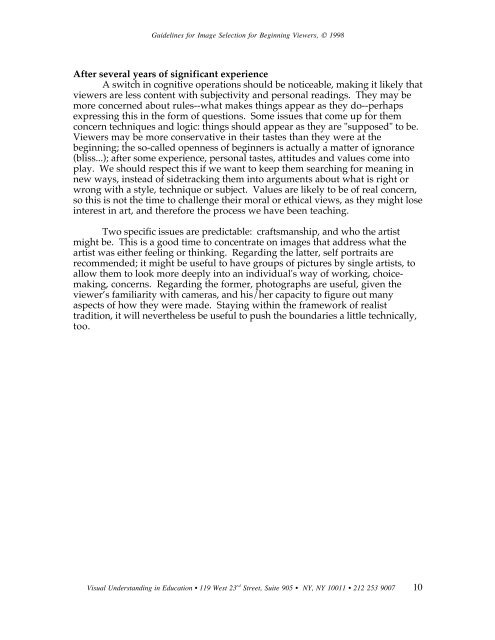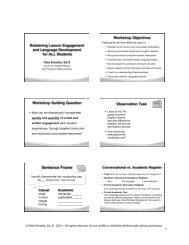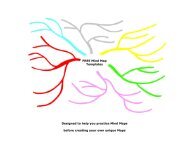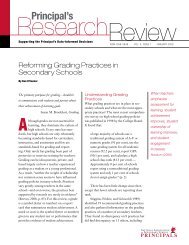Guidelines for Image Selection for Beginning Viewers - eStaffRoom
Guidelines for Image Selection for Beginning Viewers - eStaffRoom
Guidelines for Image Selection for Beginning Viewers - eStaffRoom
Create successful ePaper yourself
Turn your PDF publications into a flip-book with our unique Google optimized e-Paper software.
<strong>Guidelines</strong> <strong>for</strong> <strong>Image</strong> <strong>Selection</strong> <strong>for</strong> <strong>Beginning</strong> <strong>Viewers</strong>, © 1998<br />
After several years of significant experience<br />
A switch in cognitive operations should be noticeable, making it likely that<br />
viewers are less content with subjectivity and personal readings. They may be<br />
more concerned about rules--what makes things appear as they do--perhaps<br />
expressing this in the <strong>for</strong>m of questions. Some issues that come up <strong>for</strong> them<br />
concern techniques and logic: things should appear as they are "supposed" to be.<br />
<strong>Viewers</strong> may be more conservative in their tastes than they were at the<br />
beginning; the so-called openness of beginners is actually a matter of ignorance<br />
(bliss...); after some experience, personal tastes, attitudes and values come into<br />
play. We should respect this if we want to keep them searching <strong>for</strong> meaning in<br />
new ways, instead of sidetracking them into arguments about what is right or<br />
wrong with a style, technique or subject. Values are likely to be of real concern,<br />
so this is not the time to challenge their moral or ethical views, as they might lose<br />
interest in art, and there<strong>for</strong>e the process we have been teaching.<br />
Two specific issues are predictable: craftsmanship, and who the artist<br />
might be. This is a good time to concentrate on images that address what the<br />
artist was either feeling or thinking. Regarding the latter, self portraits are<br />
recommended; it might be useful to have groups of pictures by single artists, to<br />
allow them to look more deeply into an individual's way of working, choicemaking,<br />
concerns. Regarding the <strong>for</strong>mer, photographs are useful, given the<br />
viewer’s familiarity with cameras, and his/her capacity to figure out many<br />
aspects of how they were made. Staying within the framework of realist<br />
tradition, it will nevertheless be useful to push the boundaries a little technically,<br />
too.<br />
Visual Understanding in Education • 119 West 23 rd Street, Suite 905 • NY, NY 10011 • 212 253 9007 10






